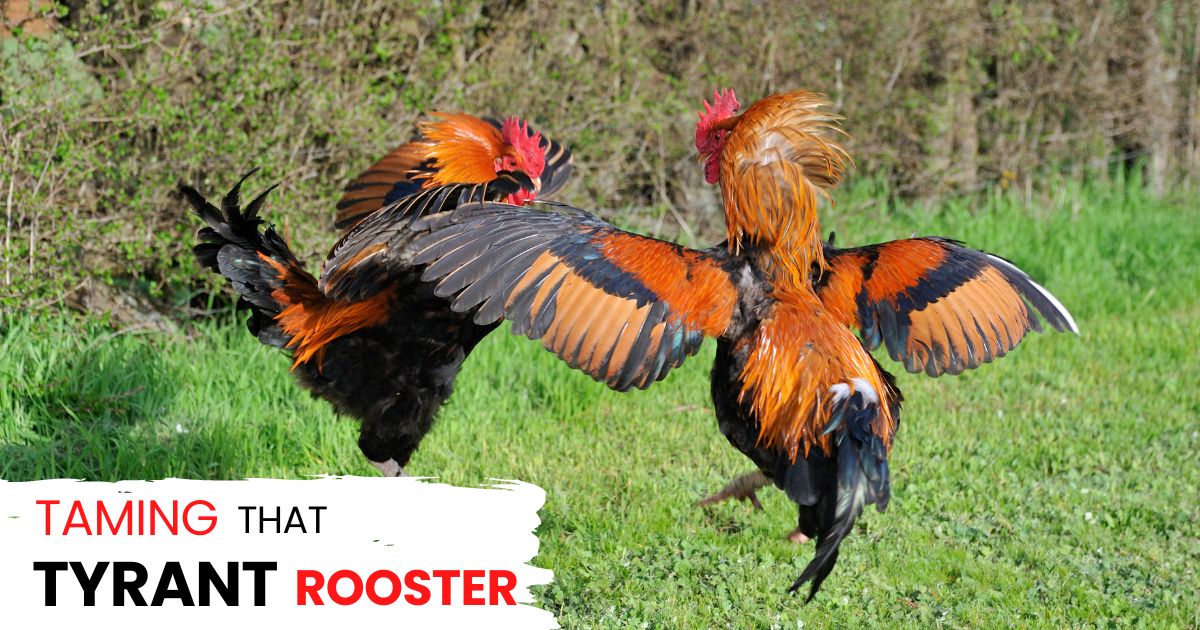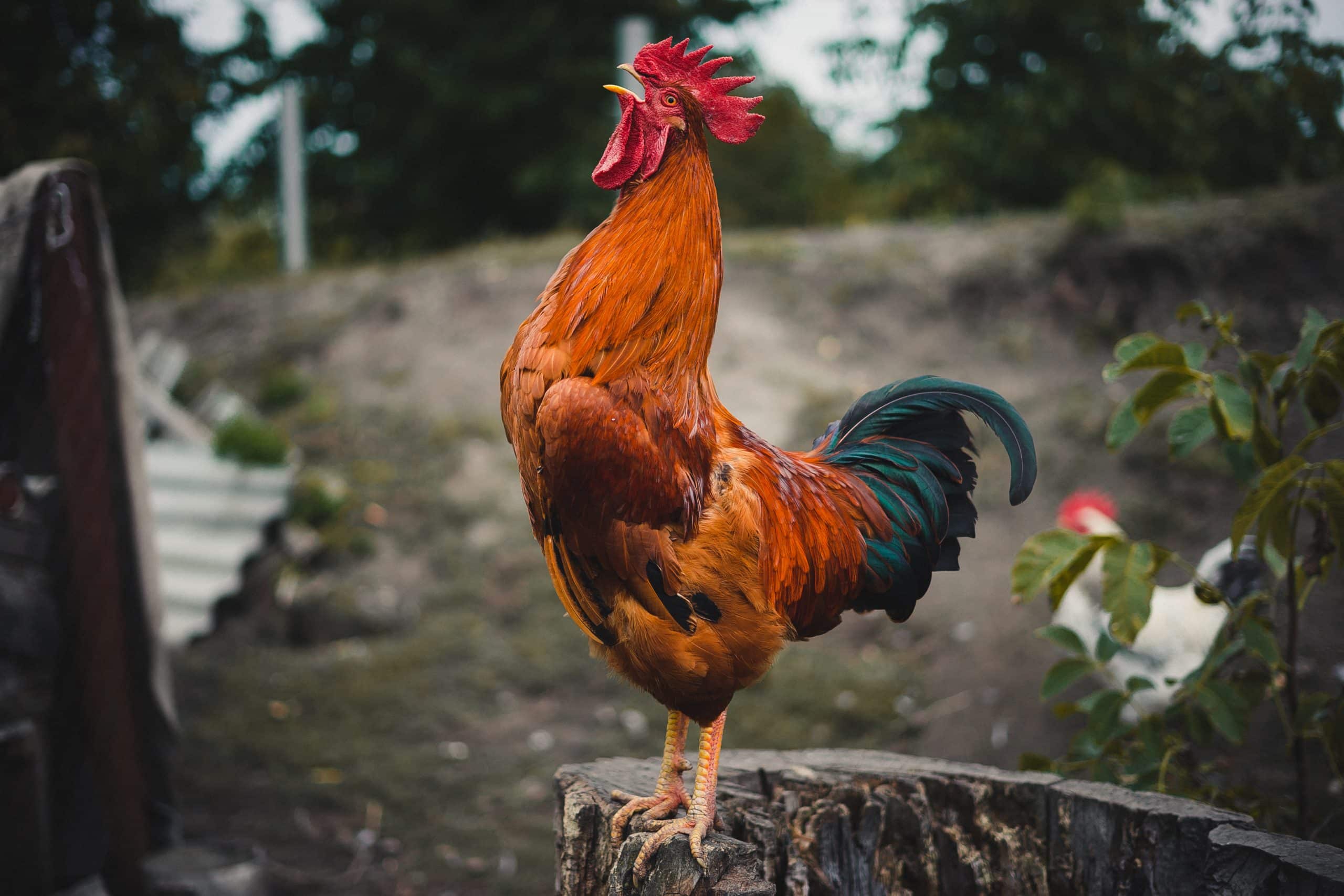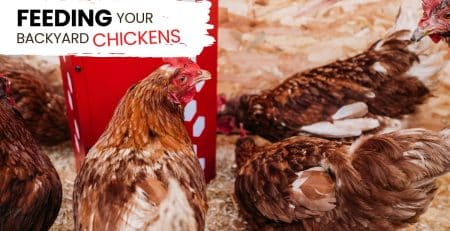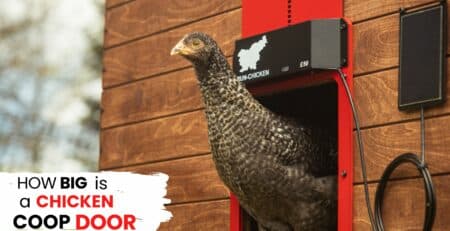Raising backyard chickens is a rewarding experience. You’ll receive fresh eggs daily, and these funny, feathered little creatures can keep you entertained for hours. Chickens are mostly docile and friendly creatures, but if you have a rooster or two in your flock, you may notice that your hens may begin to look a little worse for wear. This can be due to many reasons, but sometimes, your aggressive rooster is the culprit.
A rooster has two purposes in life: to mate and to protect his flock. Mating can cause bald patches and wounds on the necks and backs of your hens. This may make you consider throwing your rooster in the pot–but don’t worry just yet. Although some of the behavior you’ll observe from your rooster may seem to be overly aggressive to your hens, most of it is perfectly normal. In this guide, you’ll learn to spot an overly aggressive rooster versus normal behavior and be able to troubleshoot the problem before you decide to get rid of him.
Why do roosters peck the hens?
Roosters are the kingpins of their flock; they are the leaders, the protectors, and they are at the top of the pecking order–and watching them strut around the yard, you’ll see that they know. But if you’re new to raising chickens, some of your rooster’s behavior towards your hens may alarm you at first. He may peck or bite their neck and back, mount them, and scratch them, causing them to lose feathers.
Mating
A rooster’s primary goal in life is to mate. One rooster may mate with up to 10 hens multiple times a day. Pecking is a form of courting behavior in roosters, so if you see them do this, don’t be too alarmed. They will peck or bite a hen on the head, neck, or back to court her, and in turn, she’ll lie down for him to mount her. This may be a little unnerving the first few times you see it but rest assured that your rooster usually won’t hurt your hens. His other primary goal is to protect the hens, after all.
Mounting the hens can result in scratching and/or biting as the rooster steadies himself, and you may hear a few squawks from the hen. But again, this is all normal chicken-mating behavior. Be aware that if your hens start to develop open wounds or extreme bald spots and feathers missing from other places, as well as the back of the neck, then you may have an overly aggressive rooster.
How Can I Tell If My Rooster Is Too Aggressive?
A lot of the behavior that you’ll notice between your rooster and hens may seem a little extreme, but most of it is normal. A rooster will mate between 10 and 30 times a day with multiple hens, so a lot of what you’ll see is just the rooster doing what roosters do. But how can you tell if he is being too aggressive, and what can you do about it?
If you notice that your hens are consistently bald on their back and necks and they have open wounds showing, your rooster may be mating with them too much. Roosters can choose a favorite hen or two, and these will usually show more signs than the others. If you notice your hens have difficulty growing their feathers back, or they’re bleeding, hiding more than usual, or making too much noise when being mated or courted, then your rooster may be too aggressive with them. A rooster usually only gets aggressive with hens for a few reasons because, after all, his primary goal is to protect the flock.
Possible Reasons for Rooster Aggression
Diet
Studies have shown that there is a correlation between your rooster’s diet and its behavior. Chickens need high-fiber diets consisting of grains, grasses or hay, and plenty of protein. Salt and protein deficiencies have been known to cause aggression in chickens, so consider purchasing a protein-rich feed. You can also add a little salt to their water in the morning to help with a salt deficiency. You’ll need to change the water at around midday. Ensure that your chickens are getting the proper amount of nutrients if you have an extra-rowdy rooster–it may just change his behavior towards your hens.
Boredom
Like all intelligent species, chickens need some form of stimulation to keep them occupied, especially if they’re kept cooped up all day. Roosters and hens alike will try and alleviate boredom by picking on other chickens or even terrorizing the entire flock. Chickens are more intelligent than many people give them credit for. Therefore, you see them constantly pecking, scratching, and foraging–they need something to do all day!
An automatic chicken coop door from Run-Chicken can ensure that your chickens are promptly let out at the crack of dawn–because the early bird gets the worm–so they’ll have plenty of time to forage and play. If you have a rooster that seems to be terrorizing your hens, consider investing in things to keep your flock entertained, such as chicken swings, ladders, and other climbing structures, treats, or balls, or you can even hang veggies and fruit for them to peck on throughout the day. If you have an aggressive rooster that seems to be picking on your hens, consider adding things to keep them from being bored and see if it changes their behavior.
Do You Have Enough Hens for Your Rooster(s)?
A young rooster will mate multiple times a day with multiple hens. If your hens are looking a little roughed up, ensure that your rooster or roosters have enough hens. At their prime, a rooster needs to have 6 to 10 hens to mate with, and if there aren’t enough present, it can lead to them over-mating with the hens you have. This can lead to bald spots on the hen’s necks and backs, patches of feathers missing from other places on their body, and even open or bloody wounds. If you don’t have enough hens for your rooster, consider investing in more hens for your flock’s protection. You can also consider clipping or rounding off their sharp spurs, which are usually the cause of the severe scratches on your hen’s backs.
Insufficient Space In The Coop and Run
Another reason your rooster may seem extra aggressive to your hens is that there may not be enough coop space for your flock. If your chickens are in their pen and run all day and are not able to free-range, they’ll need at least 4 square feet per bird to roam in the run and at least 2 square feet per bird in the coop. This all depends on the breed and size of your birds (because some are larger than others) but be sure to provide your flock with the adequate amount of space that they need. An automatic chicken coop door can guarantee that your chickens are let at dawn, ensuring that they have the proper amount of time to roam during the day on the run.
Protecting Your Hens from An Aggressive Rooster
If your roosters still seem to be overly rowdy with your hens, there are a few things that you can do to help protect your girls and get them back to normal.
Chicken Saddle
If you have a hen that seems to look worse than the others, this is usually because your rooster has chosen his favorite. If this is the case, consider making or purchasing a chicken saddle, which is a piece of fabric that covers the hen’s back to help protect her when the rooster mounts her. You can even purchase chicken saddles that are made to keep the rooster away completely, giving your girls some time to heal.
Round Off the Rooster’s Spurs
Another suggestion to help save your hens some stress from a tyrannous rooster is to consider rounding off or even removing your rooster’s spurs. A rooster uses his spurs to steady himself when he mounts a hen, which can cause scratches and missing feathers, but they also play a vital role in helping him protect the flock. A rooster will use his sharp, spear-like spurs to defend the flock from predators, and the most protective roosters will fight to the death. Keep this in mind if you decide to round off your rooster’s spurs because you’ll have to ensure that your flock has extra protection. Consider purchasing a sturdy, predator-proof automatic chicken coop door from Run-Chicken as an extra layer of protection for your chickens during the night if you have to remove or round off your rooster’s spurs.
Separate The Rooster
Another way to protect your hens and give them some time to heal from an aggressive rooster is to separate the rooster from the flock for about a week. If you have an extra pen or run, put the rooster by himself to give him time to cool down. You can do this by moving him during the night after everyone is sleeping. He’ll wake up alone with plenty of time to think about what he’s done. You can also take this time to ensure that he has a proper diet and is receiving enough protein and that he’s also not suffering from a salt deficiency. These things can help rehabilitate your rooster’s attitude when reintroducing him back to your flock.
Get Rid of The Rooster
If you’ve tried everything, including separating your tyrant rooster from your flock and reintroducing him, and your rooster still terrorizes your hens, then it may be time to get rid of your rooster. Hens don’t need a rooster present to be able to lay eggs; the rooster’s job is to fertilize the eggs and protect the flock. If you get rid of your rooster, remember to offer your hens extra protection, such as a sturdy automatic chicken coop door, which will help keep them safe in the coop during the night.
You can also try to introduce a new rooster to your flock if you really want to have one around. A common practice among backyard chicken keepers is to introduce a smaller-breed rooster to your flock, such as a Bantam. This way, you won’t have to worry about so much wear and tear showing on your girls’ backs.
Roosters constantly go after their two main life goals: mating and protecting. If you have a tyrant rooster who bullies your hens incessantly, you may have an overly aggressive rooster on your hands. What we often perceive as aggression is usually common mating practice for chickens, but sometimes a rooster can endanger your hens. So, if you have a rooster that is bullying your hens, first try figuring out the problem, and if all else fails, replace him.
Read here about safely adding new chickens to your flock:







